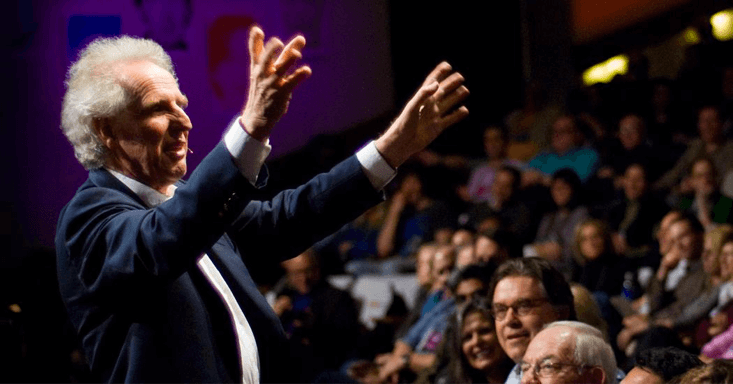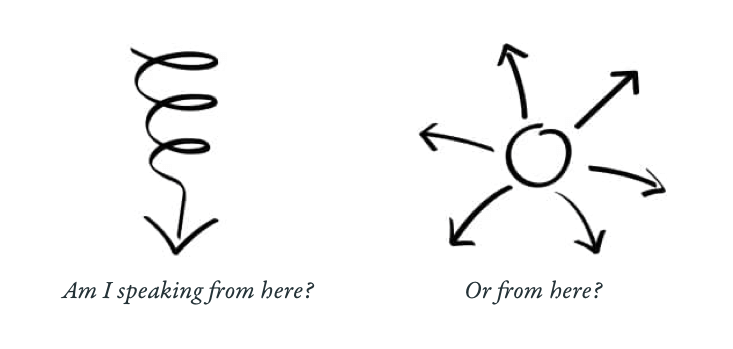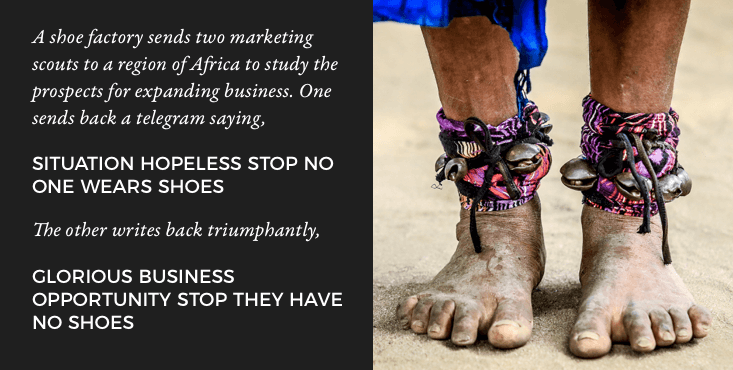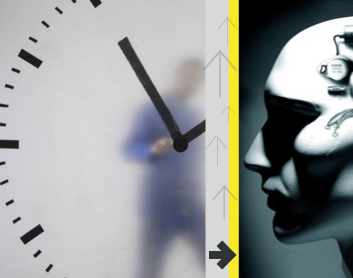
The power of possibility
Sometimes there are speakers who inspire you to think differently and pursue a path that previously felt impossible. Ben Zander’s talk on the “Art of Possibility” helped me to transform my professional and personal life, and redefine what it means to be a good leader.
It was the last day of a week-long leadership training for McKinsey & Company in Cambridge, UK and a packed auditorium shuffled expectantly in their seats, waiting for the keynote speaker to arrive. When Ben Zander walked onto the stage and began sharing his uplifting stories and personal anecdotes, I could tell I was not alone in feeling my spirits rise. This acclaimed conductor of the Boston Philharmonic, and co-author of “The Art of Possibility,” exuded so much energy, passion and humor that the crowd of consultants – arguably less-than-fresh after a week of intensive training and socializing – was noticeably moved.
 Source: Benjamin Zander TED talk “The transformative power of classical music”
Source: Benjamin Zander TED talk “The transformative power of classical music”
One of the anecdotes I remember most fondly was Zander’s story of a little girl he’d met one morning while having breakfast with a friend. When he met her again the next morning, and asked “Good morning. How are you today?” she answered with a sparkle in her eye “Perfect.” Later, as she was leaving with her parents, Zander called out to her “Have a perfect day!” to which she responded “I will!” as though it were the easiest, most obvious choice in the world. As he recounted this exchange, the octogenarian literally pranced across the stage, cheekily imitating the little girl and drawing laughter from the McKinsey consultants gathered before him.
Shifting perspective, radiating possibility
Zander went on to talk about how to create what he called a “universe of possibility,” in particular by shifting perspective. Instead of measuring everything and placing everything hierarchically, he suggested trying instead to live in a universe focused on imagining what might be possible. Energetically drawing on a large piece of paper, he reinforced this point to dramatic effect:

He encouraged us all to live into our possibilities, emphasizing the importance of overcoming odds. Instead of thinking in downward spirals, he suggested that we instead think about how we can radiate possibility. Instead of viewing the world as positive or negative, winners and losers, good and bad, he recommended that we see the world as full of possibility. In this redefined context, challenges become opportunities, mistakes are interesting chances to learn, and people can be the source of unlimited potential.

In the measurement world, you set a goal and strive for it. In the universe of possibility, you set the context and let life unfold.
There is an example in the opening chapter of Zander’s book that conveys this point particularly well:

Each of the marketing scouts are witnessing the same evidence, but drawing radically different conclusions. The only thing that differentiates them is perspective - while one sees abundant opportunity, the other sees hopelessness.
Unleashing potential
When I heard Zander speak, I was one of a growing number of people who had been brought in to build a new design practice at McKinsey & Company, one of the biggest and most established management consulting firms in the world. After a couple of years, we had already faced many challenges. Figuring out how to embed a design thinking mindset, and a culture of creativity, into a company famous for analytical rigor, exhaustive research and text-heavy powerpoint decks was not an insignificant undertaking. I was trying to understand how to be an inspirational leader for my team, while continuing to set a “new bar” for design at McKinsey. I was told by one very senior and tenured colleague that my job as a Design Director was not to “make pies in the kitchen” but rather to instruct others on pie-making, perfecting recipes and occasionally dipping in a finger to ensure the recipe tasted just right. I understood what he meant, but was having a hard time not being more actively involved in the creation.
As Zander talked about the role of the conductor in bringing out the best in musicians, I suddenly understood how my job needed to be about releasing the power of others. Creating an environment where designers could feel safe and encouraged, with adequate time to not just design but also to iterate, was my most important job. I needed to take them beyond where they would usually go. This also meant being able to negotiate for the necessary amount of time and resources so that every project was not a death march. And above all, it meant providing clear direction so that the final solution captivated both clients and users in new and unexpected ways.
Looking back, I can see vividly those projects that achieved these goals successfully, and have fond memories of the times we pushed through creative blocks and numerous operational obstacles, often working long hours into the night to create something remarkable. I also remember those projects that were a struggle, where the team didn’t gel or expectations were not aligned. I learned from them all, and as I listened to Zander playing Chopin so poetically onstage, I realized that in music as in life, practice is what it takes to get it right.

Change will not come if we wait for some other person or some other time. We are the ones we've been waiting for. We are the change that we seek.
Choosing a different path
I came back from the McKinsey leadership training incredibly motivated to put into practice all the learnings I had gathered that week. I can even remember writing an enthusiastic email thanking those who had made it possible for me to attend this event. And then I looked at my three small children and realized that continuing on the path with McKinsey, while creatively stimulating and rewarding, would mean exponential work travel and that I would become an increasingly distant figure in their lives. I was at a crossroads. It seemed that the “universe of possibility” that Zander was challenging me to consider might be more radically different than I first imagined. I ultimately chose to leave McKinsey soon after this transformative experience, determined to become a leader in a different way.

As I look back on my career, I can see now that my most important role as a design leader has always been to create the right conditions that will unlock the “universe of possibility” in my teams, and in myself. While coming up with great ideas is both personally satisfying and energizing, I’ve come to realize that it is just as important to create the space for productive collaboration with others. Finding new ways to support creative thinking and experimentation, within a much broader and diverse set of teams and contexts is something I’m deeply committed to. I’m determined to continue trying to radiate possibility, for myself and others and so far the journey has been far from uneventful :-)


